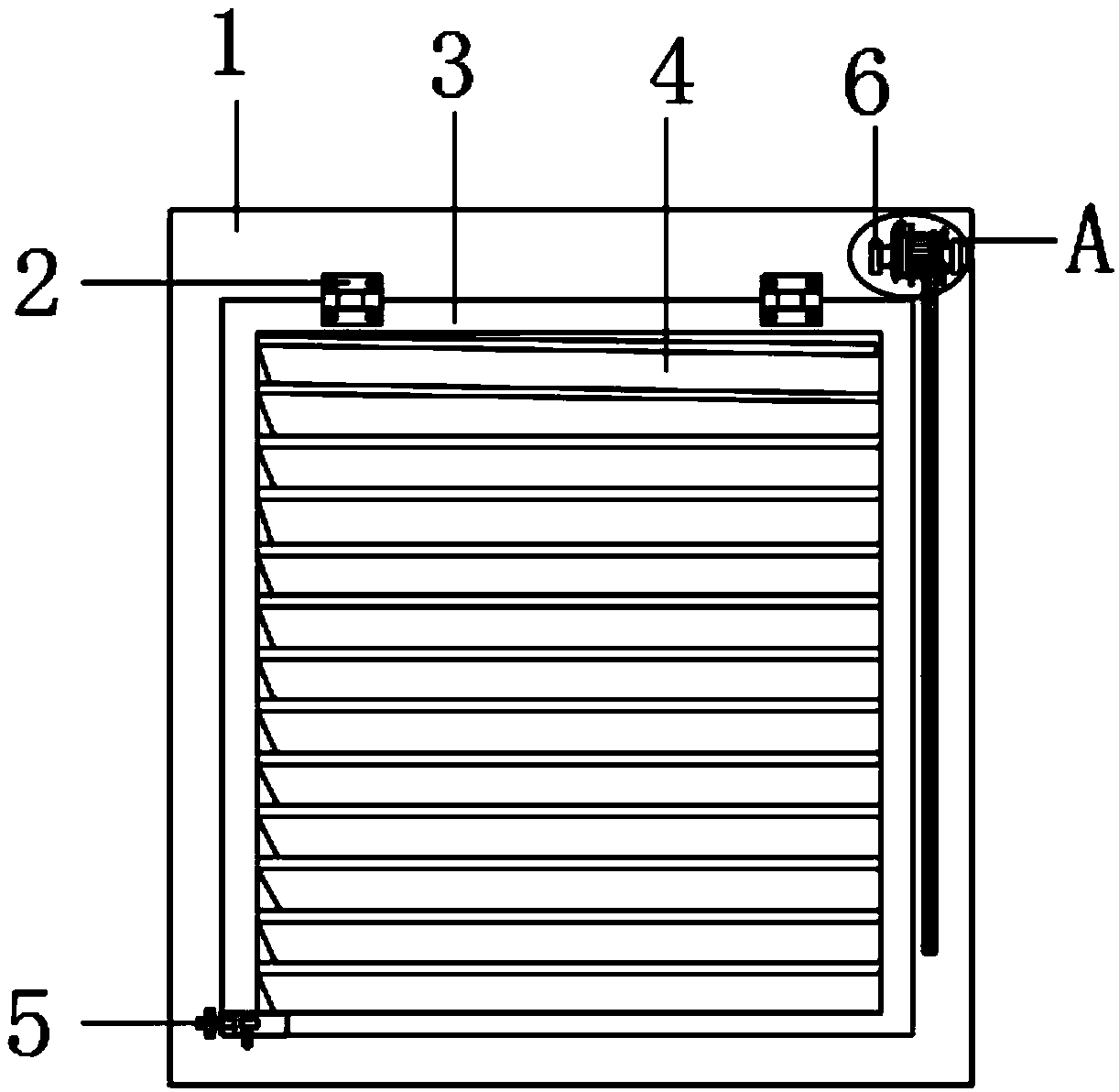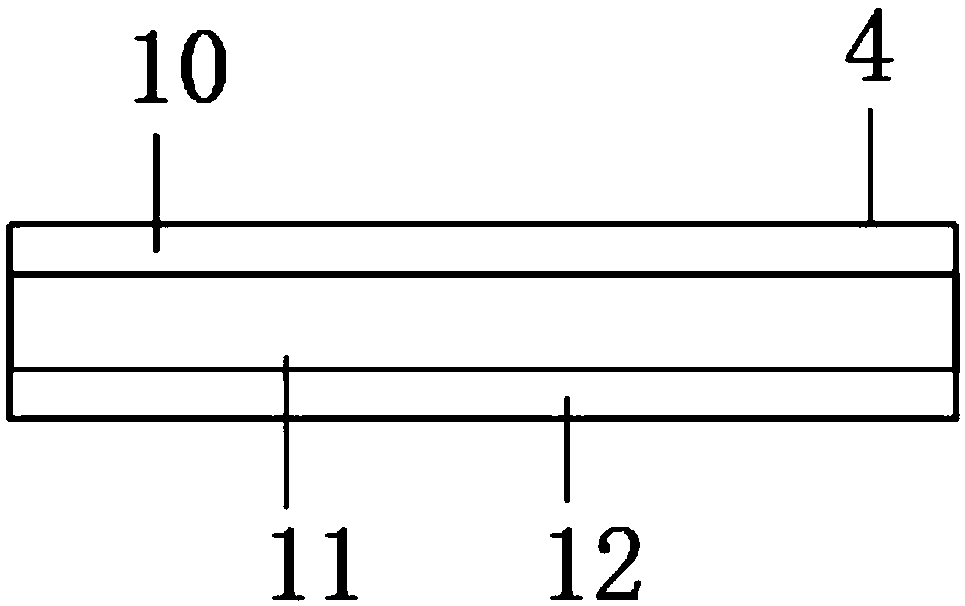Window plate having good heat insulation effect
A heat insulation effect and window panel technology, which is applied in the direction of windows/doors, the arrangement of wing leaves, the improvement of windows/doors, etc., can solve the problem of low power consumption, lack of privacy protection and airtightness, and cannot be better realized Heat insulation and other issues to achieve good heat insulation effect and good privacy effect
- Summary
- Abstract
- Description
- Claims
- Application Information
AI Technical Summary
Problems solved by technology
Method used
Image
Examples
Embodiment 1
[0029] A preparation method for a weather-resistant mildew-resistant coating material, comprising the following steps:
[0030] (1) Under the protection of an inert gas, at 375°C, react dimethyl phosphonate with 4,4'-diaminophenyl hydroxyphosphine oxide under the action of a catalyst for 10 hours, and cool down to 300°C to obtain formula (I) The polymer shown; the catalyst is selected from one or more of triphenyl phosphate, triethylamine, and ethylenediamine; the molar ratio of dimethyl phosphonate to 4,4'-diaminophenyl phosphine hydroxide 1.1:1;
[0031] Sampling, cooling down to room temperature, vacuum drying, washing, drying and crushing, the degree of polymerization was detected to be 1750, and the decomposition rate of 1% thermal weight loss was 289.9°C;
[0032] (2) Cool down to 250°C at a rate of 50°C / h, and simultaneously add polyvinylidene chloride; keep the temperature for 1.5h, and add nano-silver at the same time; vacuum dry after cooling, and obtain the polymer...
Embodiment 2
[0034] A preparation method for a weather-resistant mildew-resistant coating material, comprising the following steps:
[0035] (1) Under the protection of an inert gas, at 350°C, react dimethyl phosphonate with 4,4'-diaminophenyl hydroxyphosphine oxide under the action of a catalyst for 12 hours, and cool down to 300°C to obtain formula (I) The polymer shown; the catalyst is selected from one or more of triphenyl phosphate, triethylamine, and ethylenediamine; the molar ratio of dimethyl phosphonate to 4,4'-diaminophenyl phosphine hydroxide 1:1;
[0036] Sampling, cooling down to room temperature, vacuum drying, washing, drying and crushing, the degree of polymerization was detected to be 1710, and the decomposition rate of 1% thermal weight loss was 287.1°C;
[0037] (2) Cool down to 250°C at a rate of 50°C / h, and add polyvinylidene chloride at the same time; keep the temperature for 1h, add nano-silver at the same time; vacuum dry after cooling, and obtain the polymer and p...
Embodiment 3
[0039] A preparation method for a weather-resistant mildew-resistant coating material, comprising the following steps:
[0040] (1) Under the protection of an inert gas, react dimethyl phosphonate with 4,4'-diaminophenyl hydroxyphosphine oxide under the action of a catalyst at 400°C for 8 hours, and cool down to 300°C to obtain formula (I) The polymer shown; the catalyst is selected from one or more of triphenyl phosphate, triethylamine, and ethylenediamine; the molar ratio of dimethyl phosphonate to 4,4'-diaminophenyl phosphine hydroxide 1.2:1;
[0041] Sampling, cooling down to room temperature, vacuum drying, washing, drying and pulverization, the detection degree of polymerization is 1450, and the decomposition rate of 1% thermal weight loss is 255.0°C;
[0042] (2) Cool down to 250°C at a rate of 50°C / h, and add polyvinylidene chloride at the same time; keep the temperature for 2 hours, and add nano-silver at the same time; vacuum dry after cooling, and obtain the polyme...
PUM
 Login to View More
Login to View More Abstract
Description
Claims
Application Information
 Login to View More
Login to View More - R&D
- Intellectual Property
- Life Sciences
- Materials
- Tech Scout
- Unparalleled Data Quality
- Higher Quality Content
- 60% Fewer Hallucinations
Browse by: Latest US Patents, China's latest patents, Technical Efficacy Thesaurus, Application Domain, Technology Topic, Popular Technical Reports.
© 2025 PatSnap. All rights reserved.Legal|Privacy policy|Modern Slavery Act Transparency Statement|Sitemap|About US| Contact US: help@patsnap.com



